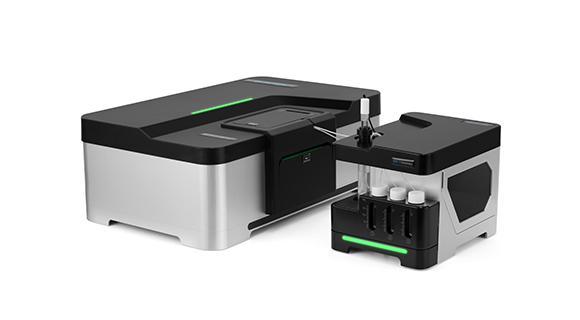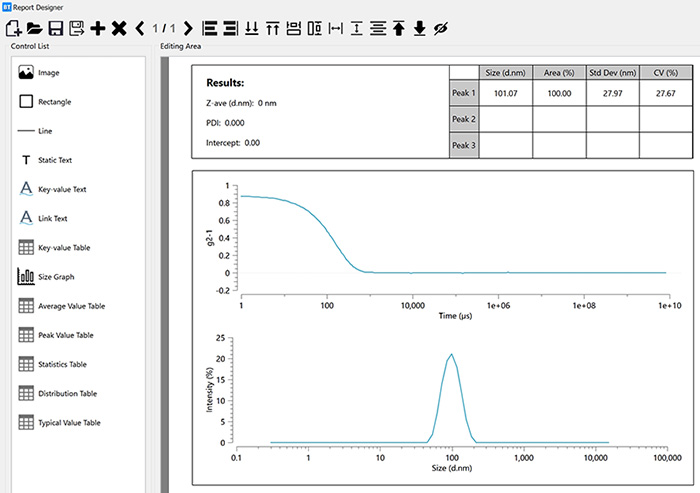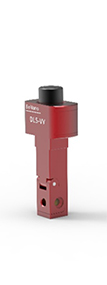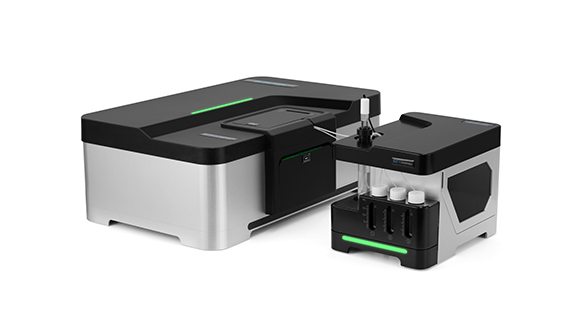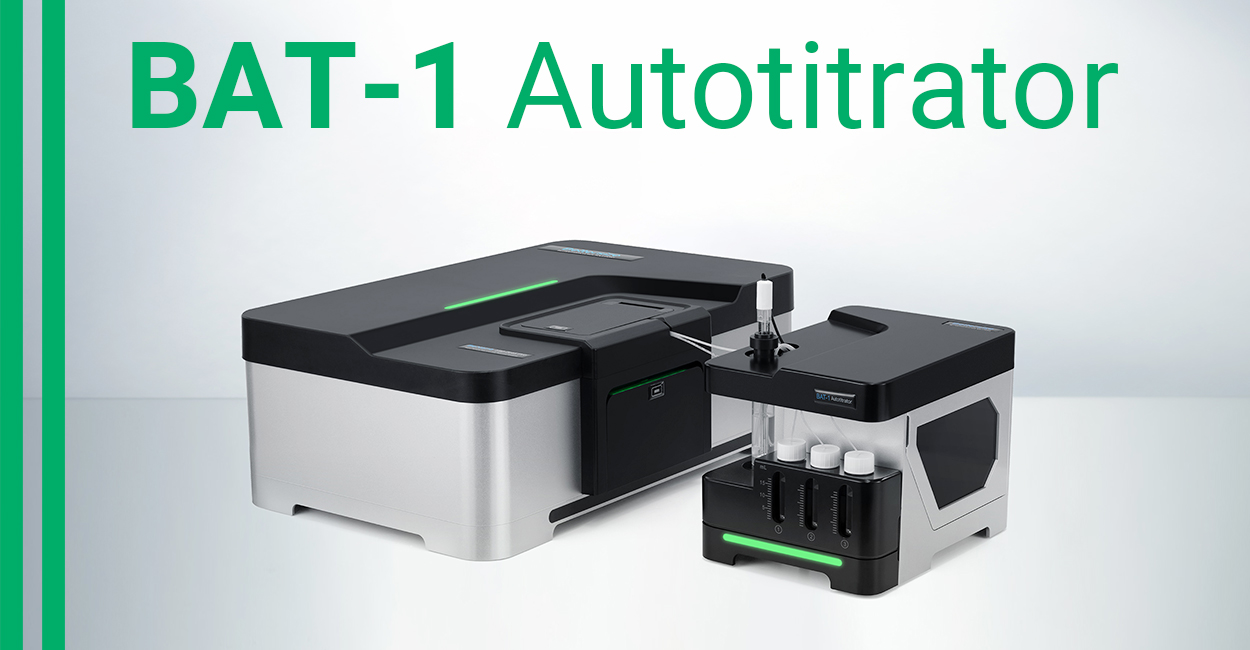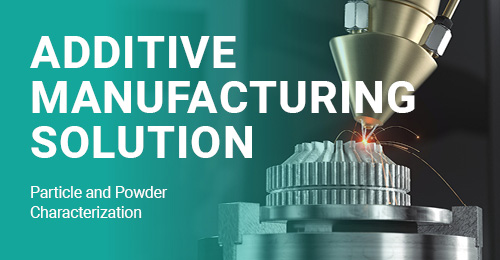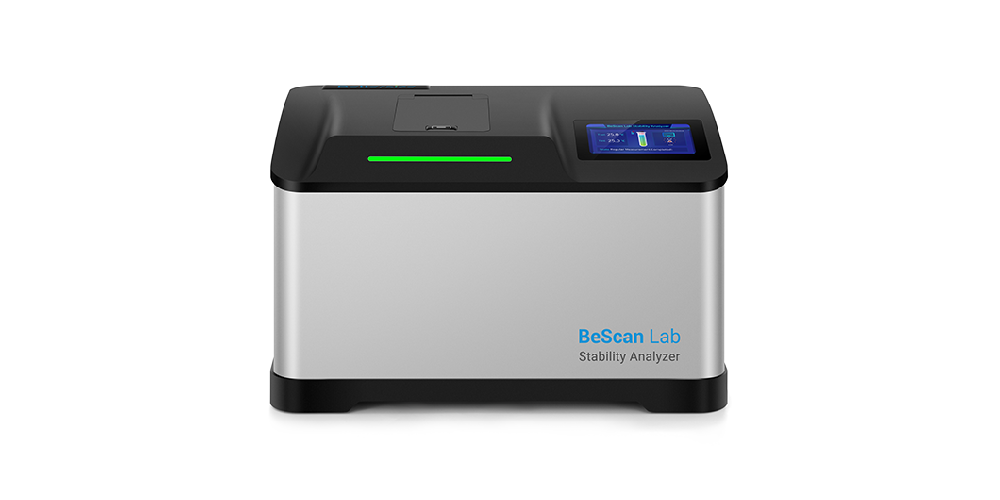BeNanoシリーズは、Bettersize Instrumentsが設計した最新世代のナノ粒子径およびゼータ電位分析装置です。動的光散乱(DLS)、電気泳動光散乱(ELS)、静的光散乱(SLS)がシステムに統合されており、粒子径、ゼータ電位、分子量の正確な測定が可能です。 BeNanoシリーズは、化学工学、製薬、食品・飲料、インク・顔料、ライフサイエンスなど、様々な分野の学術および製造プロセスに広く応用されています。
機能と利点
- ● サイズ範囲:0.3nm~15μm
- ● 最小サンプル量:3μL
- ● 卓越した感度を提供するAPD(アバランシェ・フォトダイオード)検出器
- ● レーザー強度の自動調整
- ● インテリジェントな結果評価アルゴリズム
- ● DLS後方散乱(173°)検出技術
- ● 濃縮サンプル用のユーザー調整可能な散乱体積
- ● PALS(位相分析光散乱)技術
- ● プログラム可能な温度制御システム
- ● 21 CFR Part 11、ISO 22412、ISO 13099準拠
ビデオ
Enhanced Size Resolution with DLS Flow Mode 
BeNano 90 Zeta | Demo (Polystyrene Standard Sample) 
Fundamentals of BeNano 90 Zeta 
BeNano 90 Zeta | Nanoparticle size and zeta potential analyzer 
BeNano Series | Customer Perspective & Demo 
Understanding the DLS Backscattering Technology 
Book a Free Demo with Global Distributors 
BeNano 180 Zeta Pro | Demo (Polystyrene Latex Sample) 
BeNano 180 Zeta Pro | Nanoparticle size and zeta potential analyzer 
BeNano 180 Zeta Pro Launch Event | Nanoparticle size and zeta potential analyzer 
4 Questions Nanoparticle Researchers are Really Asking About 
Fundamentals of BeNano 180 Zeta Pro 
Fundamentals of BAT 1 Autotitrator 
Fundamentals of DLS Microrheology 
How to Measure Microrheological Properties of Liquids by BeNano? 
How to Operate BAT 1 Autotitrator to Measure Zeta Potential vs. pH 
Fundamentals of BeNano 180 Zeta Pro 
概要
BeNanoで研究の可能性を広げる
- 先進のELSテクノロジーPALS
PALSテクノロジーは、等電点に近い試料や塩濃度の高い試料など、電気泳動移動度が弱い試料でも、電気泳動挙動を効果的に識別し、抽出することができます。
- 先進のDLSテクノロジー:後方散乱検出
後方散乱DLS光学系は、90度光学系に比べてはるかに大きな散乱体積を検出することができます。測定位置の移動が可能な後方散乱DLSは、より高い感度と高い濁度測定能力を提供します。
- 温度トレンド測定
熱に敏感なサンプルの場合、プログラムされたSOPで温度トレンドを簡単に実行できます。BeNanoは、測定結果の温度遷移点(タンパク質サンプルの凝集温度)を検出することができます。
- 安定性と耐久性に優れた光学ベンチ
BeNanoは、50mW固体レーザー、シングルモードファイバーシステム、高性能APDディテクタを採用し、安定した広範囲かつ冗長性の高い検出能力を提供します。
- 研究用ソフトウェア
BeNanoソフトウェアは、散乱光信号をインテリジェントに評価・処理し、信号品質と結果の安定性を向上させます。様々な計算モードを内蔵しており、様々な科学研究や応用分野に対応できます。
- 超微量サンプル
微量サンプルの測定は、製薬業界やアカデミアにおける研究開発の初期段階で必要とされます。キャピラリサイジングセルでは、わずか3~5μLのサンプル量で正確な粒子径測定が可能です。
| モデル | 測定技術 | 主な機能 | |||||
| 90° DLS & SLS | 173° DLS & SLS | 12° ELS & PALS | 粒子径 | ゼータ電位 | 分子量 | レオロジー特性 | |
| BeNano 180 ゼータ電位 | √ | √ | √ | √ | √ | √ | √ |
| BeNano 180 ゼータ | √ | √ | √ | √ | √ | √ | |
| BeNano90ゼータ | √ | √ | √ | √ | √ | √ | |
| BeNanoゼータ | √ | √ | |||||
| BeNano 180 Pro | √ | √ | √ | √ | √ | ||
| BeNano 180 | √ | √ | √ | √ | |||
| BeNano 90 | √ | √ | √ | √ | |||
1.動的光散乱(DLS)による粒子径測定
動的光散乱(DLS)は、光子相関分光法(PCS)または準弾性光散乱(QELS)とも呼ばれ、分散媒中のブラウン運動を測定するために使用される技術です。小さい粒子は速く動き、大きい粒子は遅く動くという原理に基づいています。粒子の散乱強度はアバランシェフォトダイオード(APD)で検出され、相関器を使用して相関関数に変換されます。この相関関数から数学的アルゴリズムを適用して拡散係数(D)を求めることができる。流体力学的直径(DH)とその分布は、拡散係数を粒子径に関連付けるストークス-アインシュタイン方程式を用いて計算することができる。
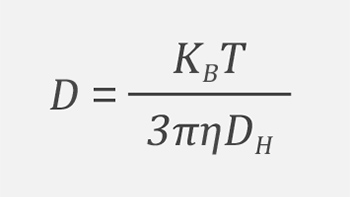

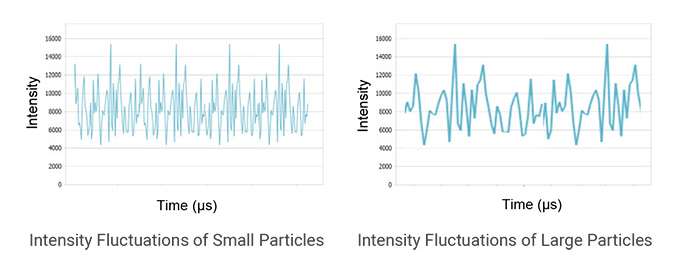
2.後方散乱検出技術
特徴
- より広い濃度範囲
検出位置を最適化することで、高濃度サンプルをサンプルセルのエッジ付近で検出することができ、多重光散乱効果を効果的に最小化します。
- より高い感度
従来の90°光学設計と比較して、散乱体積は8~10倍、感度は約10倍。
- より高いサイズ上限
大きな粒子からの多重光散乱を緩和し、散乱体積がはるかに大きいため、大きな粒子の個数変動がある程度減少します。
- より優れた再現性
DLS後方散乱技術は、塵埃の混入や不均一に分布した凝集体の影響を受けにくく、より優れた再現性を提供します。
最適な検出位置をインテリジェントに検索
- ソフトウェアがサンプルのサイズ、濃度、散乱能力に基づいて最適な検出位置を自動的に決定するため、最高の測定精度を達成し、さまざまな種類や濃度のサンプルを柔軟に検出できます。この機能は、散乱特性や濃度がそれぞれ異なるさまざまなサンプルを扱う場合に特に有効です。

(1)サンプルセル中央の検出ポイント
散乱体積が大きいため、装置感度が向上し、散乱効果の弱い希薄サンプルの検出に適しています。
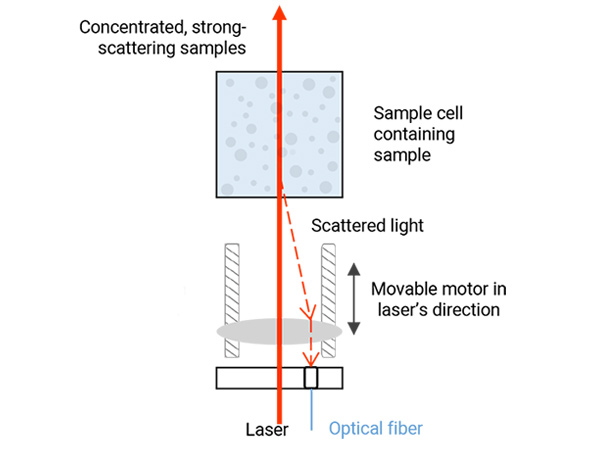
(2) サンプルセル端の検出点
高濃度サンプルの多重散乱効果を回避し、正確で再現性の高い粒子径測定結果を保証します。
3.DLSフローモード
DLSフローモードは、複雑な多分散系の高分解能粒子径測定結果を提供します。GPC/SECやFFFのようなフロントエンド分離装置と組み合わせると、粒子は単分散フラクションに分離され、粒径ごとに順番にBeNano内を流れます。各フラクションの粒径は連続的に測定され、高分解能の粒度分布として合計されます。
BeNanoは、RIまたはUVシグナルの取得が可能で、バッチモード測定に比べ、アルゴリズムに依存しない、より正確な体積分布と個数分布が得られます。

粒子特性評価にBeNanoとSECを統合使用
応用例
- 粒子径と分散性に関する微粒子とポリマーの特性評価
- タンパク質のモノマー、ダイマー、凝集体の識別
サイズ、強度、屈折率(RI)の流出曲線
 黒色の曲線:バッチモードによるBSAサイズ分布
黒色の曲線:バッチモードによるBSAサイズ分布
赤色のヒストグラム:フローモードによるBSAサイズ分布
フローモードでは、バッチモードと比較して、BSA分子のサイズや分散性に関するより正確な情報を得ることができます。
4.高分解能サイズ測定
特徴
- GPC/SEC、FFF等と接続可能なDLSアナライザー。
- RI、UV、その他の検出器から最大3シグナルを受信
- 27uLの低容量フローセルでバンドブロードニングを回避
- サイズ分解能は1.3 :1
- 強度だけでなく、数と体積で重み付けされた粒度分布
- タンパク質、ポリマーなどの複雑な多分散系に適しています。
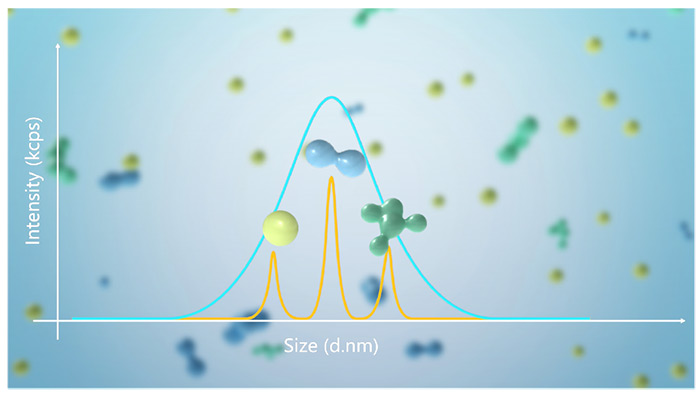
フローモードによる高分解能粒度分布
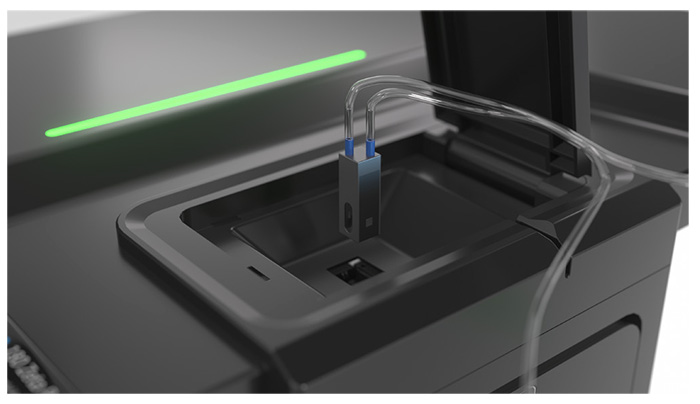
測定中、粒子はフロー中に留まる

粒径分離後、粒子を検出
5.電気泳動光散乱(ELS)によるゼータ電位測定
水系では、荷電粒子は対イオンに取り囲まれ、内側のスターン層と外側のシア層を形成する。ゼータ電位は、シア層の界面における電位である。ゼータ電位が高いほど、懸濁系の安定性が高く、凝集が少ないことを示します。電気泳動光散乱(ELS)は、散乱光のドップラーシフトを介して電気泳動移動度を測定し、ヘンリーの方程式によってサンプルのゼータ電位を決定するために使用できます。
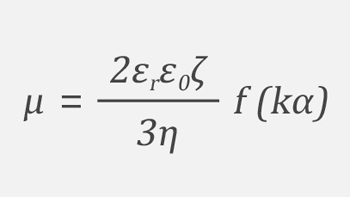
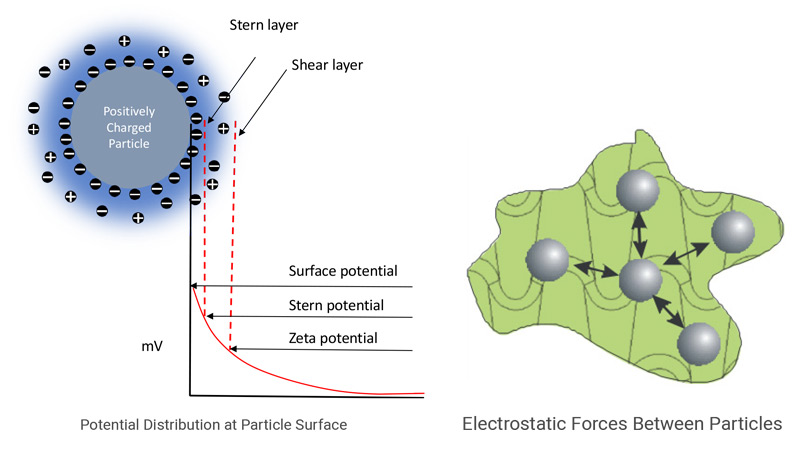


6.位相分析光散乱(PALS)
相分析光散乱(PALS)は、従来のELS技術に基づく先進技術であり、ベターサイズ社によってサンプルのゼータ電位とその分布を測定するためにさらに開発されました。
特長と利点
- 電気泳動移動度の低いサンプルの正確な測定
- 誘電率の低い有機溶媒中のサンプルに有効
- 導電率の高いサンプルでより正確な結果が得られる
- 電荷が等電点に近づく粒子のゼータ電位を効果的に測定


7.静的光散乱
静的光散乱(SLS)は、 レイリー方程式を通してサンプルの散乱強度、重量平均分子量(Mw)、第2ビリアル係数(A2)を測定する技術です:

ここで、cは試料濃度、θは検出角度、Rθは角度θにおける散乱光と入射光の強度比を特徴付けるために使用されるレイリー比、Mwは試料の重量平均分子量、A2は第2ビリアル係数、Kは(dn/dc)2に関連する定数である。
分子量測定中、濃度の異なるサンプルの散乱強度が検出されます。既知の標準物質(トルエンなど)の散乱強度とレイリー比を使用して、異なる濃度のサンプルのレイリー比を計算し、デバイプロットにプロットします。分子量と第二ビリアル係数は、Debyeプロットの線形回帰から切片と傾きによって求められます。
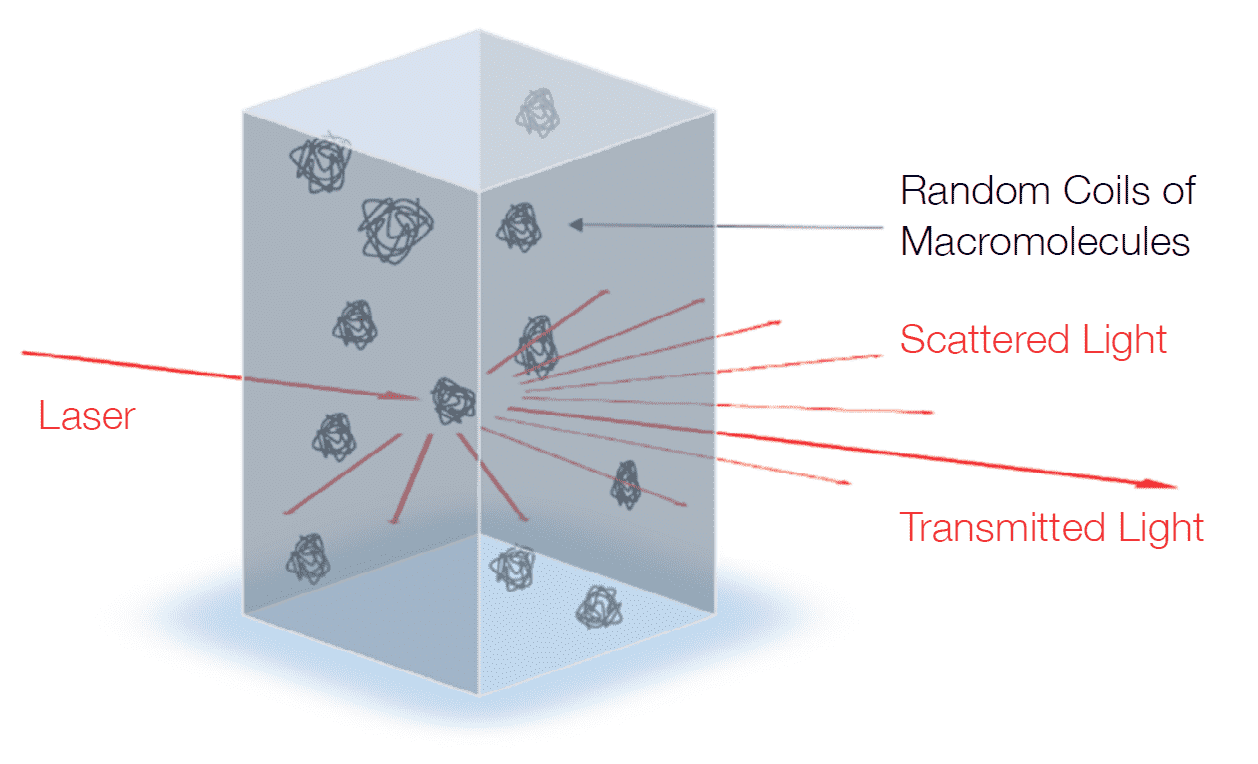
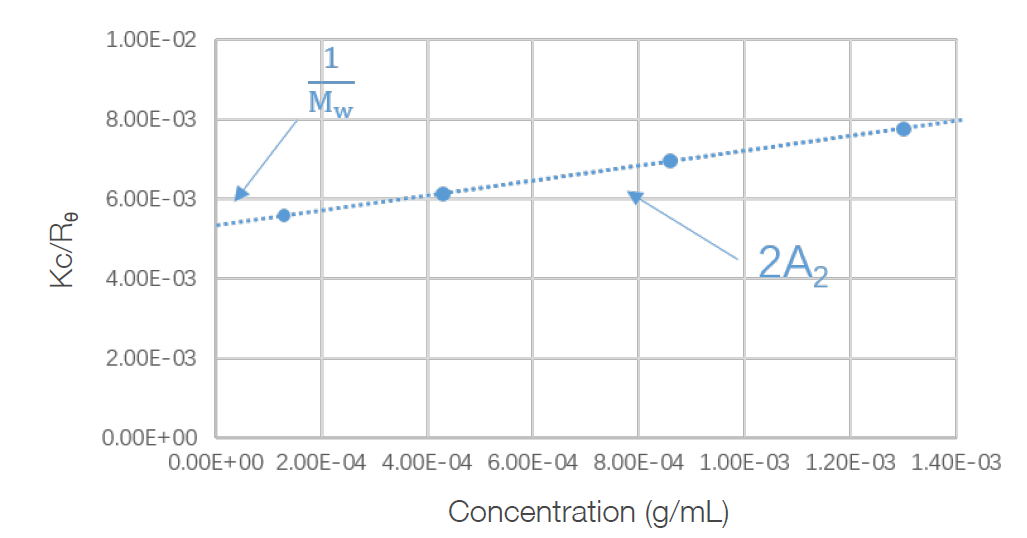
8. DLSによるマイクロレオロジー測定
動的光散乱マイクロレオロジー(DLSマイクロレオロジー)は、動的光散乱を利用してレオロジー特性を測定する、経済的で効率的な技術です。コロイドトレーサー粒子のブラウン運動を解析することで、一般化されたストークス-アインシュタイン方程式を用いて、粘弾性係数、複素粘度、クリープコンプライアンスなど、系の粘弾性特性に関する情報を得ることができます。

特長と利点
- 研究対象材料内のトレーサー粒子の熱駆動運動を測定することにより、レオロジー挙動を調査します。
- 幅広い周波数範囲での測定が可能
- トレーサー粒子に低応力を適用
- マイクロリットルスケールのサンプル量しか必要としない
- メカニカルレオロジーの結果を補完
- 構造の弱いサンプルに最適
9.温度トレンド測定
測定パラメータ
- サイズ vs 温度
- ゼータ電位対温度
特徴
- タンパク質製剤の安定性研究に有益
- 高温シミュレーションによるリアルタイムの老化促進
利点
- タンパク質製剤の安定性を簡単に調べる
- 高温シミュレーションによるリアルタイムの熟成促進

10.pHトレンド測定
測定パラメータ
- ゼータ電位対pH
- 等電点
- 導電率対pH
特徴
- 高精度三元滴定ポンプ
- 大流量・大流量の制御可能なペリスタポンプ
- 汎用電極
- インテリジェントソフトウェアによる初期pHと目標pHに基づく自動滴定液選択
メリット
- 短時間で測定を完了
- 結果の一貫性と再現性の向上
- 研究者の作業負担を軽減
- オペレーターに必要な資格を簡素化
- 高温シミュレーションによるリアルタイムの老化促進
- 腐食性液体への暴露を低減

Citations
- Bettersizer 2600
Functional redundancy as an indicator for evaluating functional diversity of macrobenthos under the mussel raft farm near Gouqi Island
DOI: 10.1016/j.aquaculture.2023.740024 Read ArticleZhejiang Ocean University | 2024Biological traits analysis (BTA) helps to evaluate the effects of different environmental variables on the traits-based functional composition of macrobenthos. However, research on functional traits of macrobenthos under mussel farming is limited. We investigated the spatial and temporal response of the benthic system in terms of taxonomic and functional diversity to environmental variables of farming and natural stressors resulting from suspended mussel farming near Gouqi Island of eastern China Sea. The functional traits of macrobenthic assemblages under mussel farming were characterized by “medium adult body size”, “vermiform body form”, “high flexibility”, “infauna”, “semi-motile”, “gonochoristic”, “surface deposit-feeders”, “carnivores”, “semi-motile burrowers”, and “tube-dwellers”. Functional redundancy was stable in response to mussel farming stresses among seasons, whereas species diversity showed efficient to evaluate natural variables. Functional diversity was significantly affected by farming stressors rather than natural variables, Further analysis using multivariate methods together with continuous monitoring were highlighted to evaluate the impacts of mussel farming. Our results reinforce the importance of macrobenthic species and functional traits analysis to evaluate human stresses driven impacts in offshore ecosystems. By analysing the environmental variables with different sources, independently, we concluded the main effects of human pressures on macrobenthic community. Such distinction could be particularly effective to isolate variable environmental descriptors and evaluate their effects on functional diversity, making the current approach promising for the evaluation of ecological effects of anthropogenic stressors in aquaculture areas. - Bettersizer 2600
Degradation characteristics and utilization strategies of a covalent bonded resin-based solid amine during capturing CO2 from flue gas
DOI: 10.1016/j.seppur.2023.125621 Read ArticleChina University of Petroleum | 2024In this study, various types of degradation as well as attrition which are possibly encountered in a circulating fluidized bed temperature swing adsorption (CFB-TSA) process, were conducted experimentally to evaluate the stability of a resin-based solid amine sorbent. Other characterizations methods, such as elemental analysis (EA), Fourier transform infrared spectroscopy (FTIR) etc. were applied to further reveal the degradation mechanisms. The results showed that thermal degradation occurs from 140–160 °C due to the decomposition of amine group. The CO2-induced degradation occurs from a higher temperature of 160–180 °C accompanied by the production of urea. Hydrothermal stability is good below 130 °C, but the ionic impurities in steam crystalized on particle surface can accelerate the degradation. Oxidative degradation is the most harmful, which starts at a lower temperature of 70–80 °C with the formation of aldehyde. The existence of H2O in atmosphere can alleviate the oxidative and CO2-induced degradations. The employed sorbent has a very low attrition index of 0.05, which is 1–2 orders lower than typical commercial fluidized bed catalysts. Based on the results of stability evaluation, some design suggestions for proper utilization of this sorbent or other similar resin-based sorbents have been provided in an industrial CFB-TSA process.
- Bettersizer 2600
De-branching of starch molecules enhanced the complexation with chitosan and its potential utilization for delivering hydrophobic compounds
DOI: 10.1016/j.foodhyd.2023.109498 Read ArticleShihezi University | 2024The current study aimed to prepare the complexes between debranched-waxy corn starch and chitosan polymers (DBS-CS), and then investigated their corresponding structural characteristics, rheological property and potent application in Pickering emulsion. The results indicated that the existence of chitosan significantly inhibited starch short-range molecular rearrangement for all DBS-CS samples, which was manipulated by both debranching treatment and chitosan content. Interestingly, this is the first study to reveal that the outstanding peak at 1.8 ppm in 1H NMR spectrum for sample DBS-CS was gradually shifted towards a lower-field region following an increased chitosan content. Moreover, the debranching treatment shifted the crystallinity pattern from A-type to B-type and the relative crystallinity of DBS-CS decreased gradually with the increased content of CS. All samples had a pseudoplastic fluid and shear-thinning behavior with an enhanced shear resistance following the complexation. The DBS-CS was applied in a Pickering emulsion for showing a greater emulsifying stability and a lower gel strength than native NS-CS prepared emulsion. Importantly, the encapsulation ability of curcumin in the DBS-CS emulsion was significantly improved, followed by an increase of 15.45% for its corresponding bioavailability compared to the control. Therefore, this study might highlight a potential carrier for delivering the bioactive substances in a green pattern. - Bettersizer 2600
Heat-induced aggregation behavior of wheat gluten after adding citrus pectin with different esterification degree
DOI: 10.1016/j.foodhyd.2023.109420 Read ArticleGansu Agricultural University | 2024Wheat gluten aggregation during heat treatment is beneficial to the final quality of gluten-based products. Exogenous pectin can affect gluten aggregation. However, the effect of pectin with different degrees of esterification on the heat-induced aggregation behavior of gluten and its possible mechanism are still unclear. Thus, the heat-induced aggregation behavior of gluten after adding pectin with different esterification degree was studied in this study. When the temperature was raised from 25 °C to 95 °C, pectin affected gluten aggregation and was related to the degree of esterification. Specifically, the results of rheological properties and particle size indicated that low-ester pectin improved the viscoelasticity of gluten and promoted gluten aggregation. Thermal properties revealed that enthalpy of gluten added with low-ester pectin (37%) increased from 92.96 J/g to 95.40 J/g during heating process. Structurally, the fluorescence intensity and surface hydrophobicity of gluten added with low-ester pectin (37%) were lower than those added with high-ester pectin (73%). In addition, low-ester pectin (37%) significantly increased the disulfide bond content (from 15.31 μmol/g to 18.06 μmol/g) and maintained β-sheet content of gluten compared with gluten alone at 95 °C, indicating that low-ester pectin was more likely to induce gluten aggregation. However, scanning electron microscope showed that the gluten added with low-ester pectin (46%) exhibited a denser network structure at 95 °C than that added with low-ester pectin (37%). These results will provide a theoretical base for the regulation of gluten aggregation and the quality of gluten-based products by pectin with different esterification degree.
- 1
- 2
- 3
- 4
- 5
- 6
- 84
厳選されたリソース
お客様のお声


BeNano 180 Zeta Pro
BeNanoシリーズは、Bettersize Instrumentsが設計した最新世代のナノ粒子径およびゼータ電位分析装置です。動的光散乱(DLS)、電気泳動光散乱(ELS)、静的光散乱(SLS)がシステムに統合されており、粒子径、ゼータ電位、分子量の正確な測定が可能です。 BeNanoシリーズは、化学工学、製薬、食品・飲料、インク・顔料、ライフサイエンスなど、様々な分野の学術および製造プロセスに広く応用されています。







